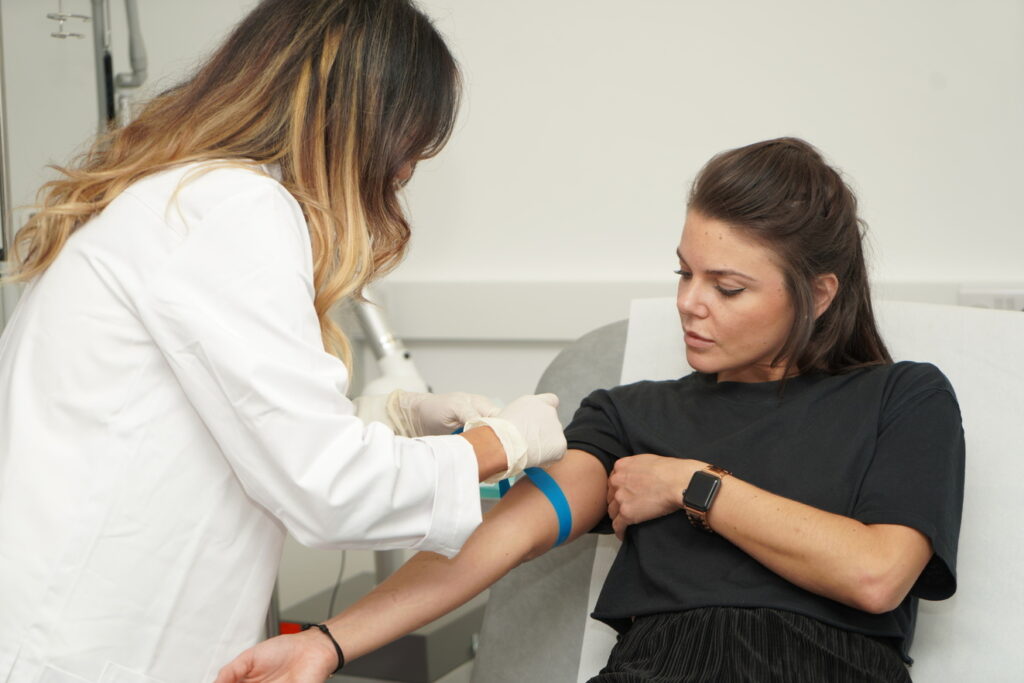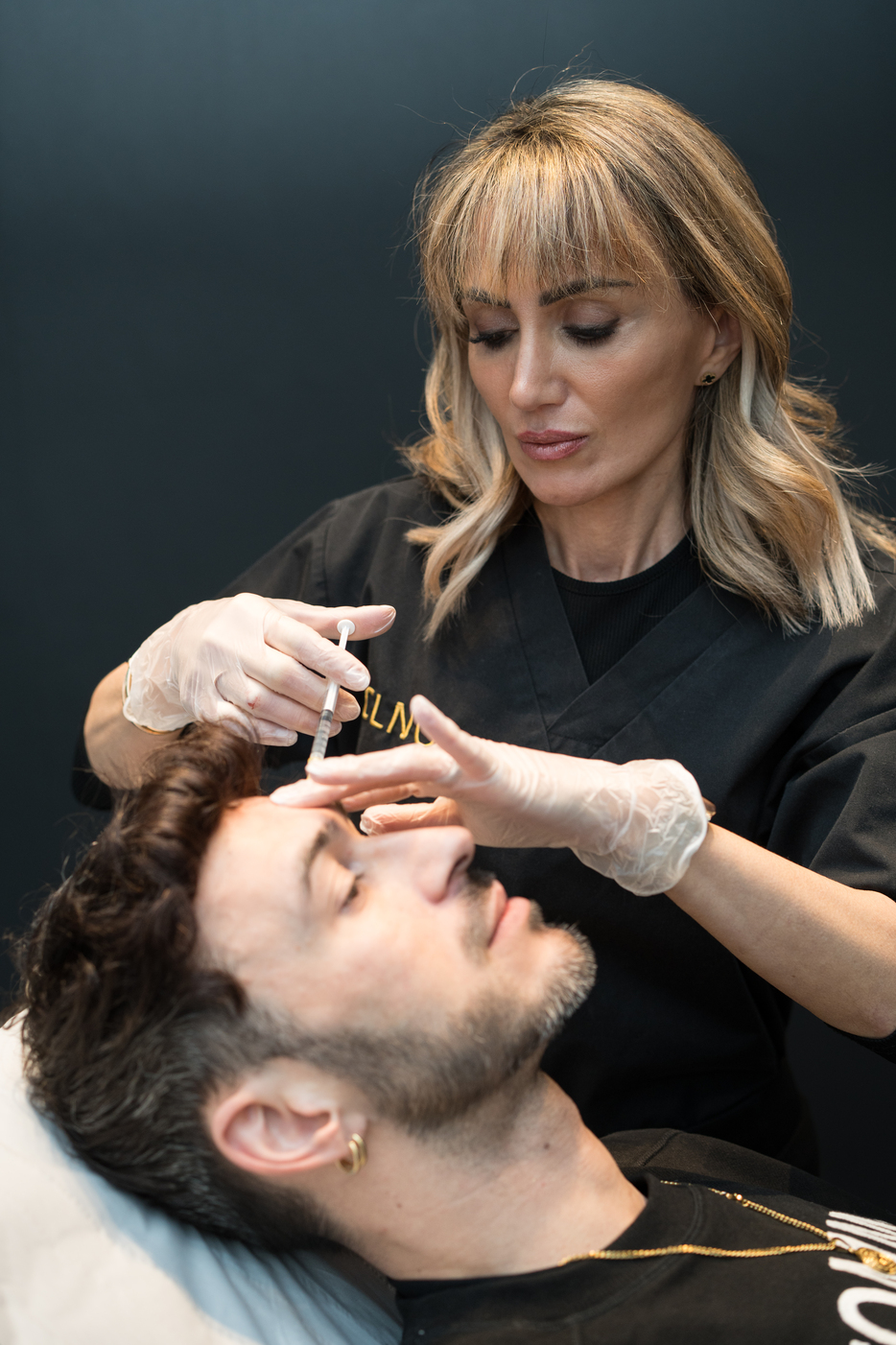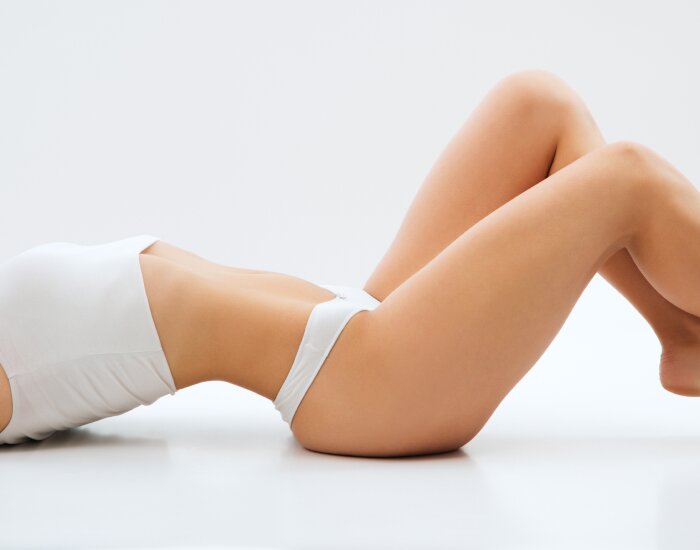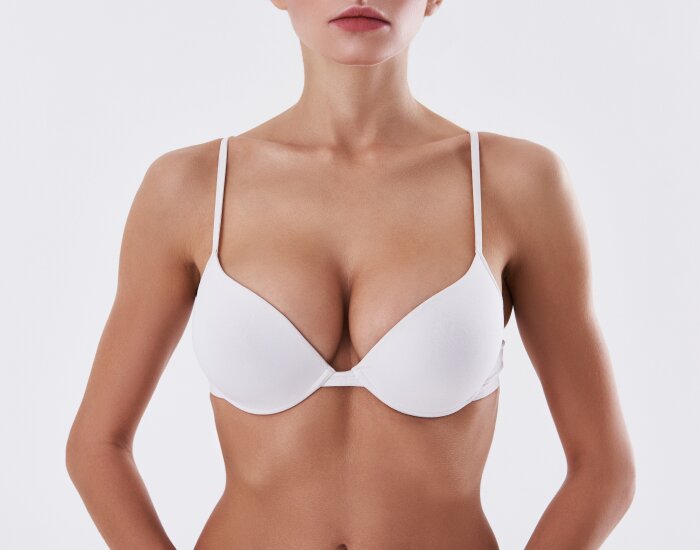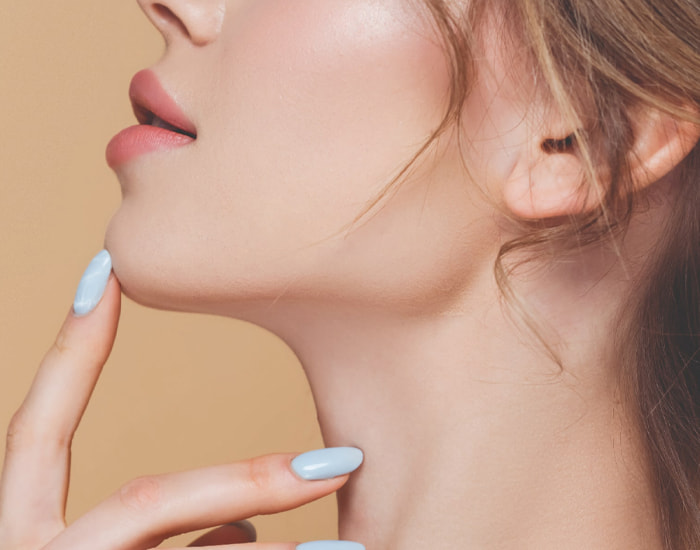What is Chin Dimpling?
Chin dimpling, also known as “peau d’orange” (French for “orange peel”), refers to a textured, dimpled appearance on the chin that can resemble the surface of an orange. This is usually due to the underlying contraction of a small muscle called the mentalis muscle, which is responsible for moving the chin and lower lip. When this muscle becomes overly active or contracts frequently, it can lead to visible dimples or a wrinkled appearance on the skin above it.
In some cases, the dimpling can be subtle and only noticeable when certain facial expressions are made, such as talking, smiling, or eating. In more severe cases, it may be visible even when the face is at rest, contributing to an uneven or irregular appearance of the chin.
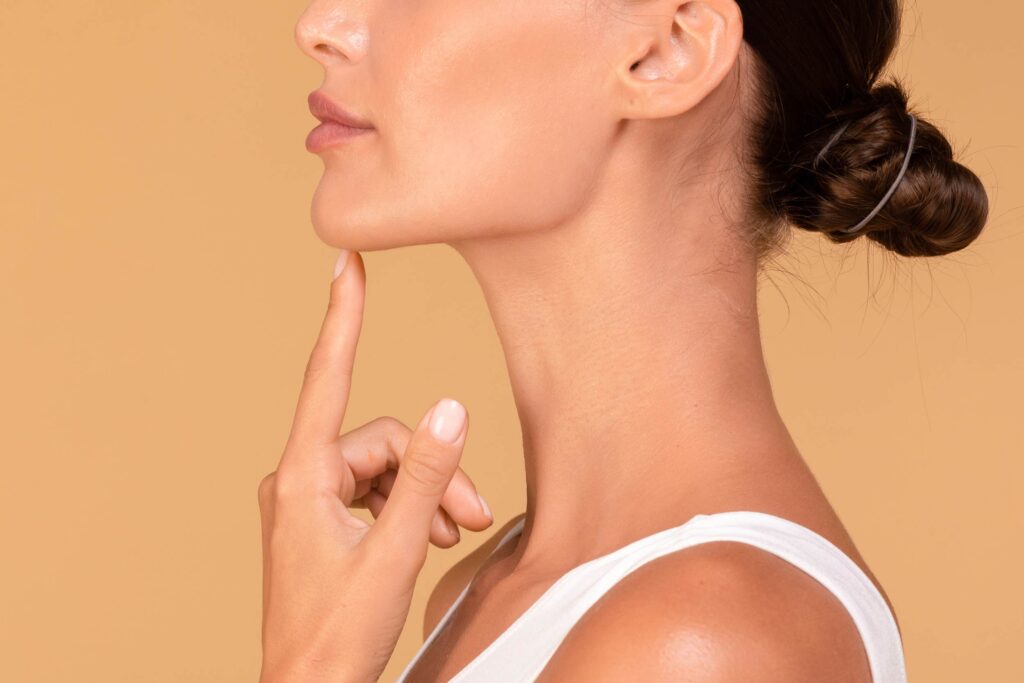
What Causes Chin Dimpling?
Chin dimpling is primarily caused by hyperactivity of the mentalis muscle. This muscle is located in the middle of the chin and is responsible for elevating the soft tissue over the chin. Hyperactivity can occur for a number of reasons, including:
- Ageing: As we age, skin loses its elasticity, and the underlying muscles become more pronounced, contributing to dimpling or creases. Additionally, over time, muscle contractions become more visible as the skin thins and collagen production decreases.
- Genetics: Some individuals are genetically predisposed to have an overactive mentalis muscle, which may result in chin dimpling from a younger age.
- Overuse of the Mentalis Muscle: This could be due to habitual facial expressions, frequent chin movements, or tension in the chin muscle, which leads to repeated muscle contractions. With time, this can cause dimpling or puckering.
- Post-Surgery Effects: In certain cases, chin surgery or other cosmetic procedures may lead to changes in the balance of facial muscles, which can contribute to dimpling.
- Skin Conditions: In rare cases, conditions that affect the skin’s surface, such as scarring or skin diseases, can create dimpling in the chin area.
How Does Chin Botox Treat Dimpling or Creases on the Chin?
Botox, or botulinum toxin, is a neuromodulator that works by temporarily relaxing muscles. When injected into the chin area, Botox reduces the activity of the mentalis muscle, the muscle responsible for chin dimpling and creases. Here’s how the process works:
- Targeting the Mentalis Muscle: Botox is strategically injected into the mentalis muscle. By relaxing the muscle, it stops it from contracting as forcefully, which in turn reduces the appearance of dimples or creases on the overlying skin.
- Smoothing the Skin: As the muscle relaxes, the tension that causes the skin to wrinkle or dimple is diminished, allowing the skin to appear smoother and more even. This leads to a more aesthetically pleasing and youthful chin contour.
- Non-Surgical and Minimally Invasive: Botox is a non-surgical treatment, which means it doesn’t require any cuts, stitches, or downtime. It’s administered through a fine needle, with most patients experiencing minimal discomfort during the procedure.
- Immediate Improvement: Patients typically notice a reduction in chin dimpling within a few days of the injection. Maximum results are usually seen after two weeks, when the Botox fully takes effect.
How Long Does Chin Botox Last?
The effects of Botox in the chin area are temporary, typically lasting 3 to 4 months. However, this can vary depending on several factors, including:
- Individual Metabolism: Some individuals metabolise Botox more quickly, which may result in shorter-lasting effects. Others may find that their results last closer to 4 months or even longer.
- Dosage: The amount of Botox used can also affect the duration of the results. If a lower dose is administered, the effects may wear off sooner than if a higher dose is used.
- Muscle Activity: People who have strong or hyperactive chin muscles may require more frequent treatments as their muscles regain movement more quickly.
- Repeated Treatments: Over time, with repeated Botox injections, some patients may notice that the effects last longer, as the muscle becomes progressively weaker from repeated relaxation.
What Are the Risks with Chin Botox?
Although Botox is generally considered safe and effective when performed by an experienced practitioner, there are some potential risks and side effects associated with chin Botox injections. These include:
- Bruising and Swelling: Since Botox is administered with a needle, there is a risk of minor bruising or swelling at the injection site. This is usually temporary and resolves within a few days.
- Asymmetry: In some cases, Botox can cause temporary asymmetry if the injections affect one side of the muscle more than the other. This could result in uneven facial expressions or imbalanced muscle tone. An experienced injector will minimise this risk by carefully assessing muscle movement before treatment.
- Difficulty Moving the Chin: If too much Botox is injected into the mentalis muscle, it can lead to a weakened ability to move the chin or lower lip. This can affect expressions, speech, or eating, although such effects are temporary and will resolve as the Botox wears off.
- Over-Relaxation of Muscles: Over-treatment with Botox can result in a chin that looks unnaturally smooth or lacks natural movement. This can give the chin an “overdone” appearance.
- Infection: As with any injection, there is a small risk of infection at the injection site, though this is rare when performed under sterile conditions by a trained professional.
- Numbness or Tingling: Some patients may experience temporary numbness or a tingling sensation in the chin area after treatment. This typically resolves on its own.
- Migration of the Toxin: Botox can potentially spread to unintended areas if not administered correctly, leading to side effects such as muscle weakness in adjacent areas. However, this is rare and typically only occurs when Botox is injected improperly or in high doses.
- Allergic Reaction: In extremely rare cases, patients may have an allergic reaction to Botox. Symptoms of an allergic reaction could include itching, rash, swelling, or difficulty breathing. It is essential to inform your practitioner of any known allergies before the procedure.
- Temporary Weakness in Surrounding Muscles: Botox can occasionally weaken muscles surrounding the chin, such as the muscles responsible for smiling or talking. This effect is temporary but can last for several weeks in some cases.
How to Minimise Risks
To reduce the risk of complications with chin Botox, consider the following:
- Choose a Qualified Practitioner: Ensure that your Botox injections are performed by a qualified and experienced medical professional. This helps to minimise the risk of incorrect placement or over-treatment. Doctors or nurses are also able to prescribe Botox and hence likely to have authentic products.
- Discuss Medical History: Inform your doctor or nurse of any medical conditions, medications, or previous reactions to Botox. This will help them determine whether you are a suitable candidate for the treatment and adjust the procedure as necessary.
- Follow Aftercare Instructions: After Botox injections, we give you specific aftercare instructions, such as avoiding rubbing the treated area, refraining from vigorous exercise for 24 hours, and keeping your head elevated. Following these guidelines can help prevent complications and ensure optimal results.
- Start with a Low Dose: In cases of uncertainty or for first-time Botox patients, it may be advisable to start with a lower dose to gauge your body’s response. This can be adjusted over time based on the results and any side effects experienced.
Conclusion
Chin dimpling, often caused by the hyperactivity of the mentalis muscle, can be effectively treated with Botox injections. Botox works by relaxing the muscle, thereby smoothing out the overlying skin and reducing the appearance of dimples and creases. The effects typically last 3 to 4 months, after which repeat treatments may be necessary to maintain the desired appearance.
While chin Botox is generally considered a safe and minimally invasive procedure, it does carry some risks, including bruising, asymmetry, and temporary difficulty moving the chin or lower lip. Book you consultation at CLNQ to find out more and see if you are suitable.

